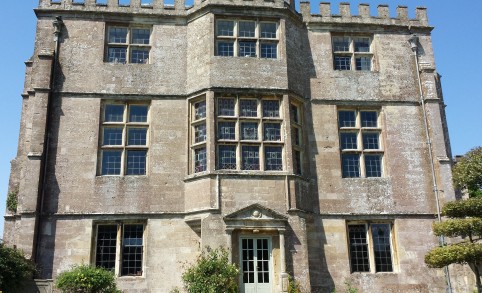The National Trust (or the National Trust for Places of Historic Interest or Natural Beauty if you’re feeling particular) is an organisation dedicated to the conservation of ‘lands and tenements of beauty and historic interest.’ Many of the iconic English country houses are maintained by them and even a few bits of the British coastline.
As a child, I spent many hours being carted off to various National Trust properties, usually with a fabulous picnic in tow. I remember this fondly but I have no idea if younger me was nearly so appreciative of quite how fantastic some of the architecture and history I was seeing was.
As an adult, the picnics mostly consist of handing over my life savings at the National Trust’s café, missing my grandparents’ ability to identify the maker and date of every piece of ceramic, but feeling very appreciative that someone has kept these snapshots of history alive. They also include an inordinate amount of time staring at textiles and grilling the poor volunteer stewards for as much information as I can glean from them.

Newark Park is located in Gloucestershire, close to Wotton-under-Edge and for a house with a reputation for being dank and cold, has some very interesting fabrics and materials in it.
The property was obtained by the National Trust in 1949, but fell into further disrepair as it was leased out as a nursing home for the next twenty years. Initially, the Trust was more interested in the preservation of natural landscapes and it had been purchased really for the grand estate surrounding the house.


However, in 1960, Robert Parsons, an American architect, fancied a taste of being an English country gentleman and purchased the house. At that time, the extent of the work the house required was so great that the National Trust had been considering removing the roof and letting it go to ruin. However, Parsons was able to restore and redecorate it to create the property you see today.

There’s an incredibly impressive display cabinet on the ground floor, rammed full of Staffordshire figures, that was the only piece custom built for the house. The rest of the contents were purchased by Robert Parsons and Michael Claydon, who would frequent the local auctions and junk shops. Sadly, this means that there is very limited information on the origin of many of the pieces in the house.

The National Trust have tried to preserve the feel of Newark as a ‘home’ rather than a museum. There are no roped off sections or ‘do not touch’ signs everywhere and rather than ring binders or signs with the information on the various rooms, there are newspapers on the history of the house lying around on the furniture.


It’s not a day out without playing ‘spot the Jacobean-influenced textiles’! The piece on the right is raised surface embroidery, although the stitching is probably not quite up to RSN standards.
Newark Hall was never built as a home, but as a Tudor hunting lodge by Sir Nicholas Poyntz. The house was generally considered inhospitably cold but salacious rumours in the local village alleged that it was also his choice of residence for his mistresses.

The roof is flat so it was possible to sit there and watch the hunt from the house. In the original building, there was also a staircase running between the kitchen and the roof so food could be brought up directly from the kitchen for the various lavish hunting parties.

During the redecoration, a lot of the wallpapers chosen were William Morris-inspired and there’s a particularly grand one on the ceiling of the dining room, as well as a charming bird perched on the lightshade.

Upstairs is where most of the textile treats are. Opposite the large stained glass window is a colourful quilt, started by Robert Parsons himself and finished by a team of National Trust volunteers. As well as a lovely selection of colours, there are also several different materials in it as well, including several pieces of silk and some jacquard fabrics. One of the carpets in the bedroom is also needlepoint done by Robert Parsons, who was apparently very skilled at a wide range of crafts.

Fantastic quilts seemed to be a bit of a feature at Newark and there was a gorgeous one made from recycled sari silk in one of the bedrooms. It looks like Victorian-style crazy patchwork to me, with heavy embroidery over all the patches and some beautiful fabrics.

Although I thought the construction of the quilt was a bit ugly, all the panels look a bit overstuffed and lumpy, this was another very interesting and unusual piece. Each panel depicts a different scene and reminds me of some Chinese paintings I’ve seen with various stories about the gods and their various misadventures.



There was a small box and mirror, presumably part of a set, in one of the bedrooms which I thought were particularly fetching. They are both surface embroidery (it looks like wool) on velvet, with the rosebuds worked in some of kind of ribbon. The stumpwork piece on the wall was also very detailed and well stitched, but sadly, also of unknown origin.



Newark Hall isn’t the most glamorous of houses or home to the most impressive of collections but the estate has some fantastic views and there are a good variety of walks of various difficulties. It’s definitely worth a visit if you’re in the area and the café does do some very nice paninis and cakes as well.


If you are interested in visiting, the National Trust has all the information on their website, including prices and opening times.

What a great day out! I have to say, I’m quite taken with the velvet box and mirror set. Your animal at the end looks a little confused – a sheep zebra!
LikeLiked by 1 person